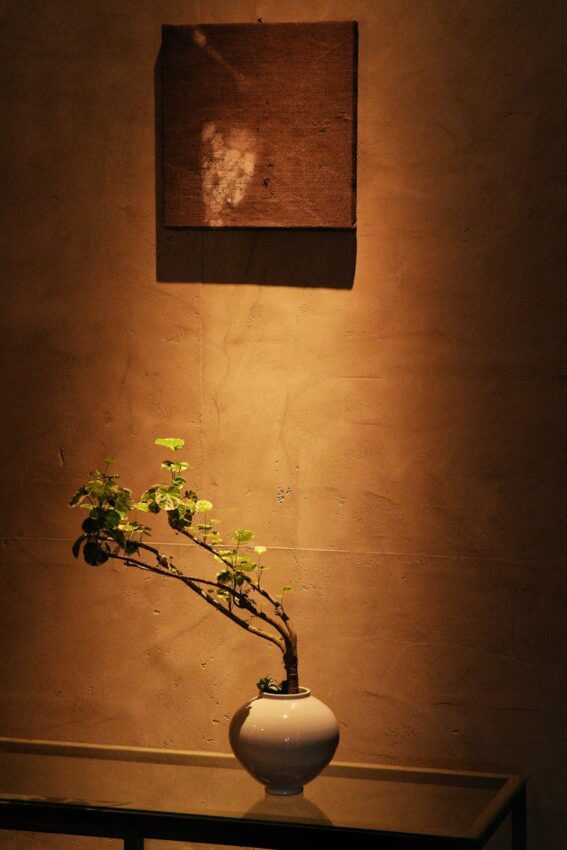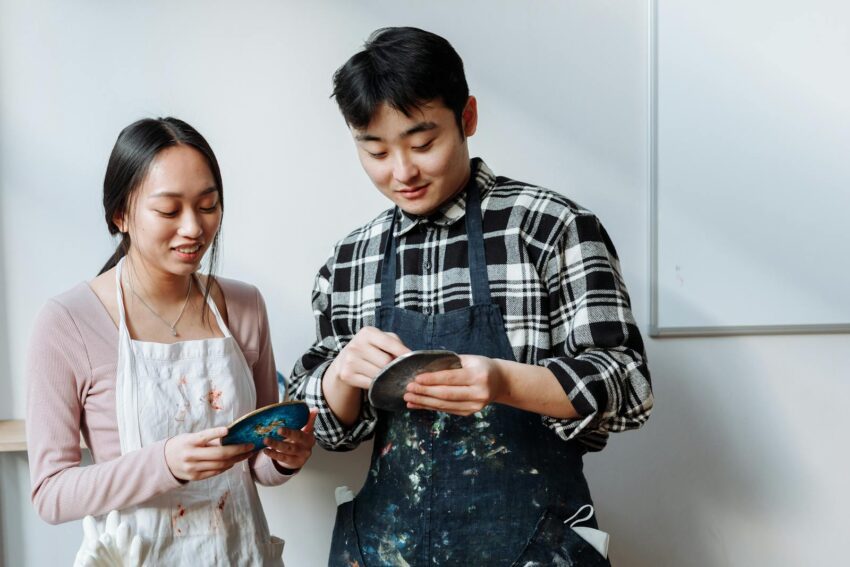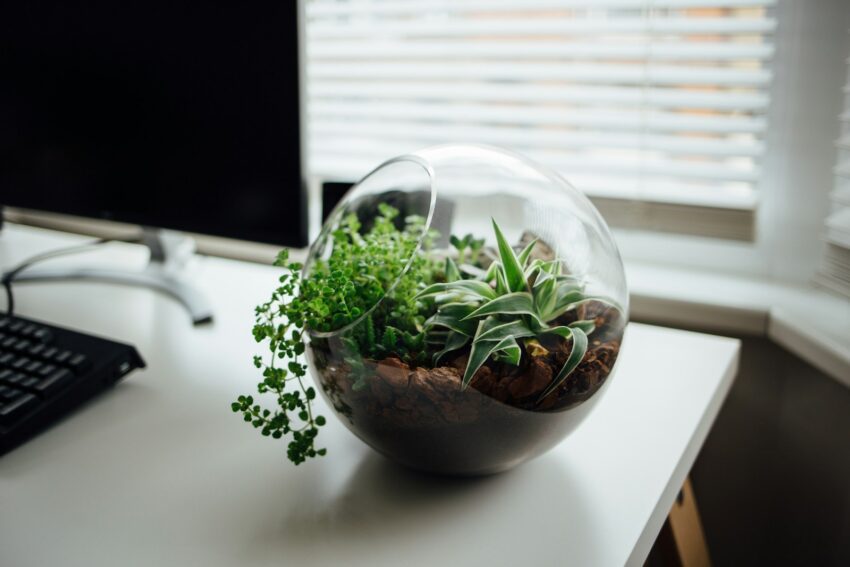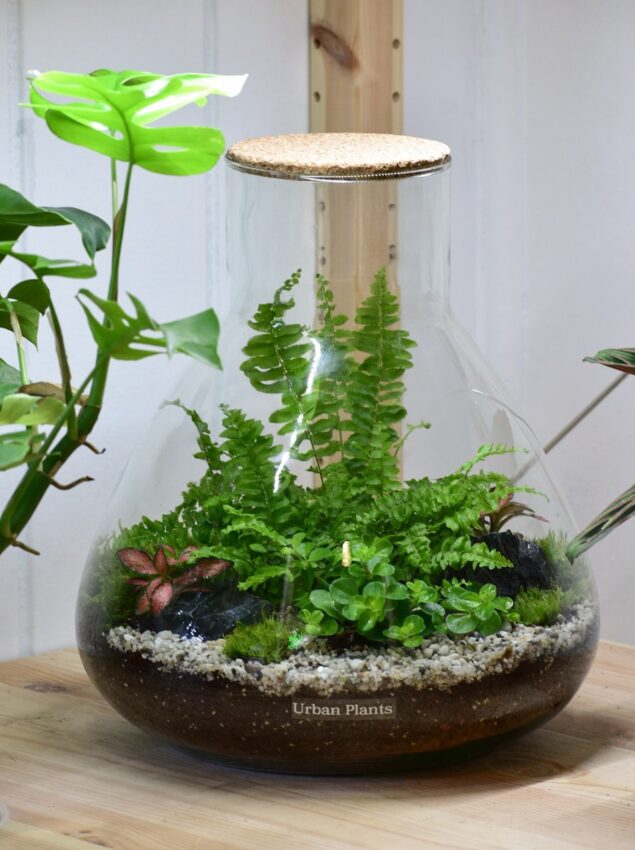For a home that feels calm, stylish, and truly personal, organic modern style hits the perfect note. It blends natural materials like warm wood and smooth stone with clean modern lines, minimalist shapes, and a neutral color palette. The result is a space that balances the warmth of nature with contemporary comfort—ideal for anyone who values both sustainability and subtle elegance. The best part is that you can tackle DIY projects to bring in key elements while enhancing the look with carefully selected pieces from top sellers.
Watch a Video of This Post

7 DIY Ways to Bring Organic Modern Style into Your Home
- Floating Wood Shelves
Materials: unfinished hardwood, natural stain, screws
Execution: Cut and mount wood planks for clean-lined shelves to display décor. - Stone-Inspired Coasters
Materials: polymer clay, paint, sealer
Execution: Shape clay discs and paint them to resemble marble or soapstone for an earthy tabletop accent. - Concrete Candle Holders
Materials: concrete mix, silicone molds, sandpaper
Execution: Pour and cure concrete into molds, then smooth edges for minimalistic candle holders. - Wabi-Sabi Ceramic Bowls
Materials: air-dry clay, matte sealer, paint
Execution: Shape uneven, organic bowls by hand for imperfect beauty that captures the Wabi-Sabi spirit. - Rattan Pendant Lamp Shade
Materials: rattan reeds, metal frame, wire
Execution: Weave reeds around a frame to craft your own sculptural lighting that adds warmth and elegance. - Neutral Textile Soft Furnishings
Materials: linen or cotton fabric, sewing machine, thread
Execution: Make pillow covers or curtains in earthy tones to soften modern edges. - Handmade Elements with Minimalist Decor
Materials: clay, driftwood, yarn
Execution: Create a clay vase, weave a wall hanging, or style driftwood to balance natural and modern design.

Curated Furniture to Complement DIY Projects
If you want to balance your DIY work with curated pieces, there are plenty of standout options. Solid-wood furniture from West Elm, Crate & Barrel, Pottery Barn, Etsy, and Grain Wood Furniture remains a popular choice for its timeless appeal and durability.
Artisan Pieces That Highlight Natural Materials
For something with a handcrafted feel, OKA offers trays, candle holders, and plush seating made from mango wood, bamboo, and hand-painted finishes that showcase the beauty of organic textures. Zillow even notes that the modern organic look can boost home value, with soapstone counters, jute rugs, rustic ceramics, and natural wood coffee tables ranking among today’s most sought-after pieces.
Create Your Own Organic Modern Terrarium
A simple, hands-on project like building an organic modern terrarium lets you bring nature indoors while reinforcing the style’s natural, timeless aesthetic. Here’s a step-by-step guide:
Materials:
- A clear glass container (open or closed, depending on preference)
- Small pebbles or gravel for drainage
- Activated charcoal to keep soil fresh
- Organic potting soil
- Small plants like succulents, ferns, or moss
Decorative stones, driftwood, or miniature sculptures
Step-by-Step Instructions:
- Layer the Base: Start with a 1–2 inch layer of pebbles or gravel at the bottom of the container to ensure proper drainage.
- Add Activated Charcoal: Sprinkle a thin layer of activated charcoal over the pebbles to prevent odors and mold growth.
- Add Soil: Layer 2–3 inches of organic potting soil on top of the charcoal, creating a soft bed for your plants.
- Plant Your Greenery: Arrange your chosen plants in the soil, gently pressing their roots in. Combine textures and heights for visual interest.
- Decorate: Add stones, driftwood, or small sculptures to give your terrarium personality and tie in the organic modern aesthetic.
- Water Lightly: Use a spray bottle to lightly mist the soil and plants. Avoid overwatering, especially with succulents.
- Position Your Terrarium: Place in a spot with indirect sunlight, and maintain by watering sparingly and trimming plants as needed.
By creating a small ecosystem in your home, you’re connecting with nature, adding texture, and cultivating a calm, intentional space. Whether used as a centerpiece, bedside accent, or office companion, your DIY terrarium embodies the harmony between clean design and organic warmth, perfectly closing out your journey into an Organic Modern home.

Get inspired by the Organic Modern design leaders
For those inspired to explore Organic Modern further, there are numerous ways to learn from the leaders and see real-world applications of the style. Books and online platforms dedicated to sustainable interior design often feature Organic Modern homes, blending natural materials, clean lines, and thoughtfully curated spaces. Publications like Dwell, Architectural Digest, and Elle Decor regularly showcase projects that embody this aesthetic, offering visual inspiration and practical guidance.
Prominent designers leading the Organic Modern movement include Kelly Wearstler, known for integrating natural textures with bold, modern forms; Axel Vervoordt, whose work emphasizes wabi-sabi, raw materials, and understated elegance; and Ilse Crawford, who designs spaces that prioritize human comfort, nature, and timeless design. Their projects often highlight exposed wood, stone, and neutral palettes while embracing functional simplicity.

Organic Modern isn’t limited to private homes—it is increasingly found in major buildings and commercial spaces. Hotels like Four Seasons Resort Dubai at Jumeirah Beach and The Line in Los Angeles use natural stone, greenery, and minimalistic furniture to create serene, nature-connected environments. In residential architecture, celebrity homes often showcase organic modern elements: floor-to-ceiling windows that frame outdoor landscapes, stone and wood accent walls, and open layouts that encourage light, air, and connection to nature.
Workshops, online tutorials, and design courses also provide hands-on experience, from furniture crafting to interior styling. For homeowners and DIY enthusiasts, studying these examples offers a roadmap for incorporating sustainable, organic materials while maintaining a clean, modern aesthetic. By observing the work of these innovators and visiting notable buildings, anyone can gain insight into creating a timeless, personal, and environmentally conscious living space.
